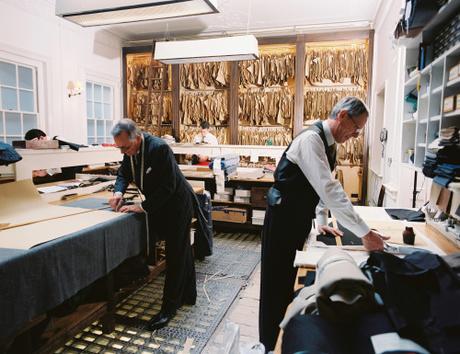
I had a post planned today about brown summer suits, but it’s hard to talk about anything except Brexit after yesterday’s historic vote. The consequences stretch well beyond the economy (let alone issues regarding shopping). There are more serious concerns about globalism, liberalism, and the idea of Europe as a whole. Since is this a menswear blog, however, I suppose the most relevant question here is how this will affect readers interested in men’s clothing.
In the days leading up to the vote, the UK fashion industry largely took a “Remain” stance on the issue. That alone should signal something to Americans today cheering for the depreciated pound (which included me, albeit tongue-in-cheek). Although we now enjoy lower prices on British goods, things may quickly change in the future.
The reason is obvious. Most ready-to-wear brands manufacture abroad and use imported materials. A weaker pound will likely send costs soaring, which means companies will either have to shoulder those costs or pass them on to consumers. Add to this the new inefficiencies in trade (inspections at the border, upended regulations, delays, import taxes, etc), and things can add up. Companies who find their sales affected may also shutter, while those risk-adverse may raise prices just for insurance.
Then there’s the issue of talent. British designers in the past have been able to gain valuable experience in Paris and Italy thanks to more open borders, but that may be more difficult in the future. Similarly, Continental students now face the possibility of higher tuition at UK fashion schools, which could affect the quality of this industry’s intellectual capital. And what to do with all the Italian seamstresses who are already working at UK factories? Do those firms now have to pay for visas? Will companies have a harder time sourcing quality labor in the future?
“Leave” proponents say the UK is now in a better position to take care of its own economy and laws. Who knows how this will play out in the long run, although the market is certainly taking a hit in terms of confidence (leading some to worry about a possible contagion). In the short term, the only obvious winner is maybe global luxury firms who have pound-denominated expenses (i.e. British brands who manufacture in Britain), but do most of their sales abroad in dollars. Their costs will largely remain the same, while their dollars will now buy more pounds. Additionally, bespoke tailors and Northampton shoemakers – who largely see their expenses in terms of British labor and rents – may see in a surge in sales thanks to a depreciated currency.
Of course, if the economy on a whole ends up being less vibrant, that means less jobs and lower tax receipts (leading to more austerity measures and growing inequality), which won’t be good for anybody.
The future seems uncertain, but for now, the pound is trading about 10% lower on the US dollar. Some expect another 10% drop by the year’s end (although early predictions peg a ~1.30 GBP/ USD exchange rate as a baseline). If you’ve ever wanted to order that bespoke Savile Row suit, now’s the time.
(photo via Anderson & Sheppard)

